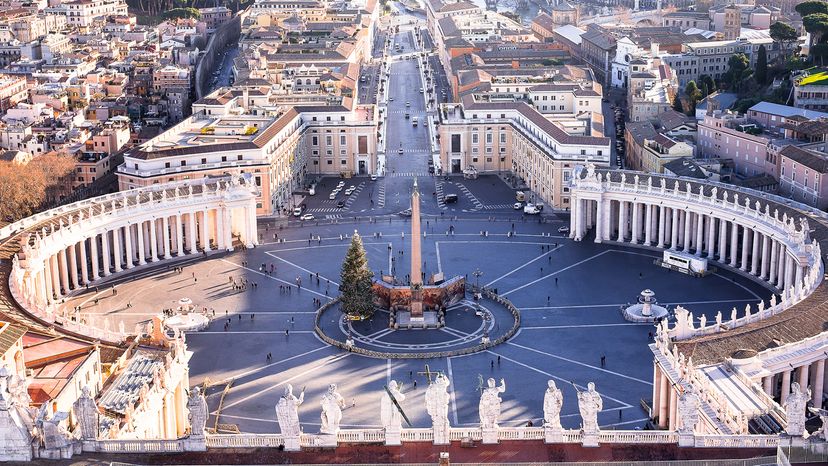All Christian religions are based on the teachings of a Judean religious leader named Jesus Christ, who is believed to have lived in the 1st Century C.E. in what is now modern-day Israel and Palestine.
Following Jesus' crucifixion and alleged resurrection, his followers formed early Christian communities that set out to spread the New Testament and their unique interpretations of the word of God. These personal beliefs evolved over time through varying historical, cultural and political climates as the religion spread worldwide.
While Christianity was often met with derision or persecution when it was seen as a rebellious break from the status quo, growing numbers of converts from diverse communities forced any naysayers to accept the new major religion.
However, even within the ranks of this relatively young belief system, there were some who had opposing views on how to best spread the word of God.
Two defining moments explain today's many Christian denominations: The first monumental event was the Great Schism of 1054, and the second was the Protestant Reformation, beginning in 1517.
The Great Schism of 1054
In the 11th Century, Christianity was divided into two primary power hubs: Constantinople in the Greek-speaking East and Rome in the Latin-speaking West. Although 1054 marks the formal break between these two groups, they had been in contention for over six centuries following the collapse of the Roman Empire and the subsequent divvying up of Christian lands.
Apart from regional and political differences, these groups often argued about best practices for operating Christian churches. For example, Orthodox Christians allowed their clergy to marry, while Catholic Christian priests believed in holy orders of celibacy.
Another major point of theological contention was that Eastern Orthodox Churches (not to be confused with Eastern Rite Catholics) strongly disagreed with the Nicene Creed practiced in Catholic worship. This doctrine proposed that the Holy Spirit proceeds from the Father (God) and Son (Jesus Christ) instead of coming directly from God.
Although these differences may seem superfluous, they sparked enough animosity for centuries of ex-communication and the eventual attack on Constantinople in 1204 during the Fourth Crusade. This battle left thousands of Orthodox Christians dead and set the stage for continued division between the Roman Catholic and Orthodox Church.
The Reformation
Sixteenth-century Europe witnessed the next pivotal moment in Christian history, now known as the Reformation. Instead of Orthodox Christians, this movement was started by leaders of future Protestant Churches like Martin Luther and John Calvin, who spoke against widespread corruption in Christian churches.
Protestant beliefs sprang from this initial outspoken dissension against the Roman Catholic Church's practices of indulgence sales and clerical celibacy, as well as the Catholic concept of purgatory and limbo.
By openly opposing these accepted tenets of Catholic worship, this new Christian church sparked debates, wars and the formation of various Christian denominations with unique views on how best to interpret God's word in the scriptures.
Generally, the concept of sola scriptura (Latin for achieving God's grace through scripture alone) remains a bedrock philosophy of all Protestant churches.
